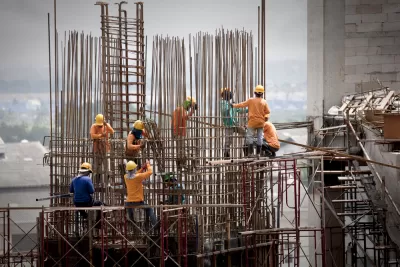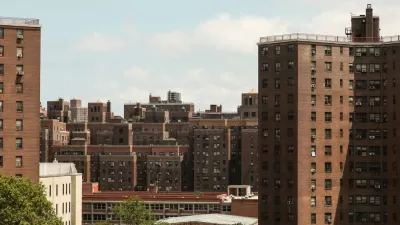The answer depends on how the question is phrased.

When a landowner proposes zoning alterations to build new housing, the landowner's neighbors often oppose the new housing. As a result, housing supply growth has stagnated over the past decade.
One common argument for the status quo is that this is just democracy at work—that, in the words of pundit Kevin Drum, "city dwellers almost unanimously don’t want lots of dense new development." This claim is based on the assumption that people who have time and inclination to go to zoning-related meetings are representative of the general public—an assumption that seems to me to be highly questionable, because meeting testifiers are a self-selected group and are older, whiter, and more likely to be homeowners than the public as a whole.
Having said that, this is certainly some evidence supporting this view: a recent survey conducted for real estate site Redfin, for example, asked respondents if they "support zoning policies that make it possible for more dense housing units, such as multi-family homes, to be built near where I live." Only 27 percent of persons answered "yes" to this question. Does this mean that new housing is unpopular?
Not quite, for a variety of reasons. First of all, the phrasing of the question may have prejudiced respondents against a "yes" answer. The word "dense" might not mean the same thing to the average person as to planners; people may hear the word "density" and imagine something unfamiliar that they don't like very much.
Second, the same survey showed high levels of support for new housing generally; 56 percent of respondents agreed that "government should provide incentives for builders to create housing” and 59 percent favored "incentives for low income housing."
Third, other surveys also suggest high levels of public support for new housing. A New York Times poll asked metro area residents of Wisconsin and Minnesota if they supported "zoning laws that prohibit the construction of duplexes, triplexes and apartments in neighborhoods with single-family homes." In Wisconsin, only 38 percent of Milwaukee residents, and only 26 percent of residents of Milwaukee suburbs, favored such laws. Similarly, in Minnesota only 33 percent of respondents living in Minneapolis and St. Paul favored those laws, and 31 percent of residents of those cities' suburbs did so.
Support for new housing is not limited to mid-sized cities. A Manhattan Institute survey asked New York City residents whether they favored “loosening land use regulations in order to allow the building of more housing”; 59 percent said yes.
It might be argued that people support apartments as long as they are in someone else’s neighborhood. The Minnesota survey tried to address this question by asking respondents whether they would be very concerned, somewhat concerned, not very concerned, or not at all concerned, if new apartments were proposed in their neighborhood. Only 12 percent were very concerned, 20 percent somewhat concerned, and 67 percent "not very" or "not at all" concerned. In both the city of Minneapolis and it suburbs, less than one-third of respondents were "very" or “somewhat” concerned.
So if you ask whether Americans want more housing or the status quo, the right answer is: it depends on how the question is phrased. But there is significant evidence that anti-housing activists do not represent the population as a whole.

Planetizen Federal Action Tracker
A weekly monitor of how Trump’s orders and actions are impacting planners and planning in America.

San Francisco's School District Spent $105M To Build Affordable Housing for Teachers — And That's Just the Beginning
SFUSD joins a growing list of school districts using their land holdings to address housing affordability challenges faced by their own employees.

The Tiny, Adorable $7,000 Car Turning Japan Onto EVs
The single seat Mibot charges from a regular plug as quickly as an iPad, and is about half the price of an average EV.

With Protected Lanes, 460% More People Commute by Bike
For those needing more ammo, more data proving what we already knew is here.

In More Metros Than You’d Think, Suburbs are Now More Expensive Than the City
If you're moving to the burbs to save on square footage, data shows you should think again.

The States Losing Rural Delivery Rooms at an Alarming Pace
In some states, as few as 9% of rural hospitals still deliver babies. As a result, rising pre-term births, no adequate pre-term care and "harrowing" close calls are a growing reality.
Urban Design for Planners 1: Software Tools
This six-course series explores essential urban design concepts using open source software and equips planners with the tools they need to participate fully in the urban design process.
Planning for Universal Design
Learn the tools for implementing Universal Design in planning regulations.
Smith Gee Studio
City of Charlotte
City of Camden Redevelopment Agency
City of Astoria
Transportation Research & Education Center (TREC) at Portland State University
US High Speed Rail Association
City of Camden Redevelopment Agency
Municipality of Princeton (NJ)






























